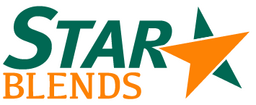Healthy Herds Ahead: 5 Common Cow Illnesses to Avoid
Whether you’re raising beef or dairy cattle, a sick cow can spell trouble. This guide explains five common cow illnesses and symptoms and how to avoid them.
Whether you’re raising beef or dairy cattle, a sick cow can spell trouble. This guide explains five common cow illnesses and symptoms and how to avoid them.
Flies can wreak havoc on your cattle’s comfort and health. Learn about the dangers of cow flies and what you can do to keep them away from your herd.
Forage testing and why it’s critical for your profits. Testing forages and grains for nutrient content gives you the information you need to improve production and profits.
Learn when to begin feeding calf starter and how to transition your calves from bottle to calf starter feed with maximum efficiency and weight gain.
Learn all about ag commodity contracts in relation to cattle feed and how commodity contracting can help your operation lock in prices and secure supply.
Discover the benefits of a beef on dairy program and why many farmers are adding this option to their farming operation, beef on dairy calves can add significant revenue for the farm.
Feeding your cattle quality feed is just step one. Learn about cattle feed storage to help keep your cows healthy, reduce waste, and protect your bottom line.
Feeding your cattle quality feed is just step one. Learn about cattle feed storage to help keep your cows healthy, reduce waste, and protect your bottom line.
From forages and concentrates to minerals and supplements, discover the key nutrients of cow feed and their role in supporting the well-being of your cattle.
From forages and concentrates to minerals and supplements, discover the key nutrients of cow feed and their role in supporting the well-being of your cattle.


CUSTOMER SERVICE
MILL LOCATIONS
Sparta
1919 Riley Rd
Sparta, WI 54656
Chippewa Falls
2093 Commerce Pkwy
Chippewa Falls, WI 54729


CUSTOMER SERVICE
MILL LOCATIONS
Sparta
1919 Riley Rd
Sparta, WI 54656
Chippewa Falls
2093 Commerce Pkwy
Chippewa Falls, WI 54729